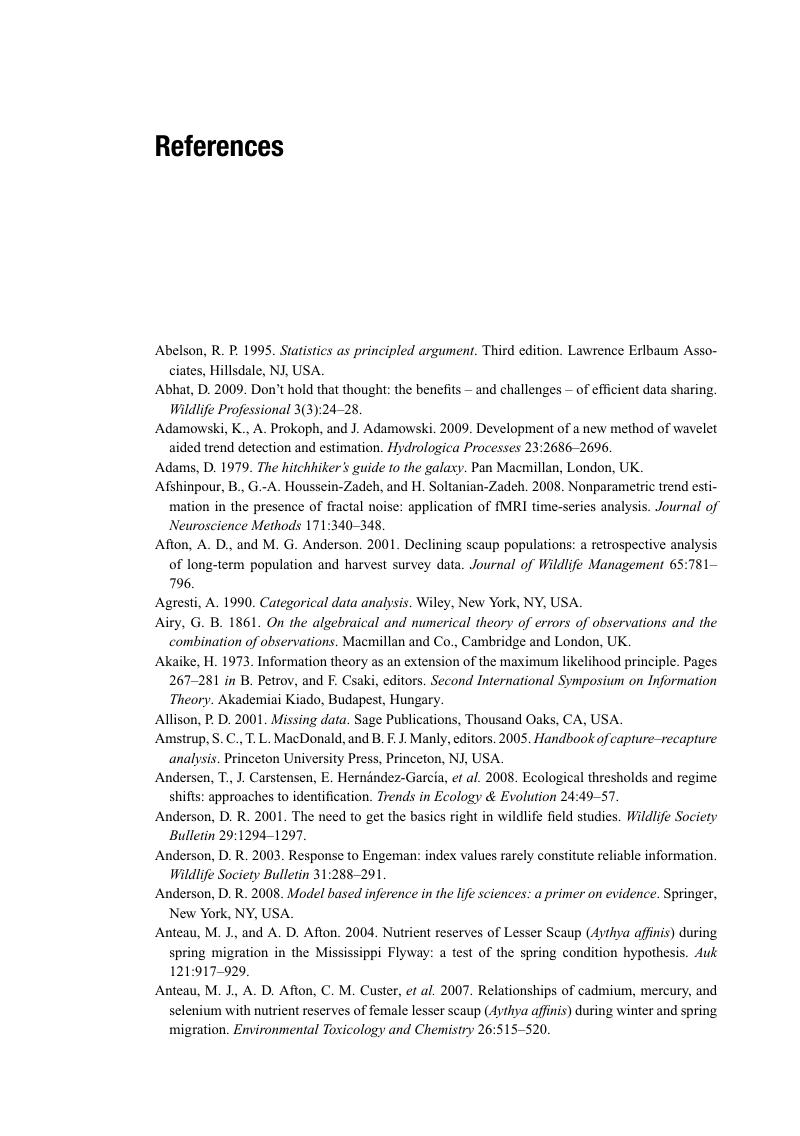Book contents
References
Published online by Cambridge University Press: 05 July 2012
Summary

- Type
- Chapter
- Information
- Design and Analysis of Long-term Ecological Monitoring Studies , pp. 509 - 552Publisher: Cambridge University PressPrint publication year: 2012



